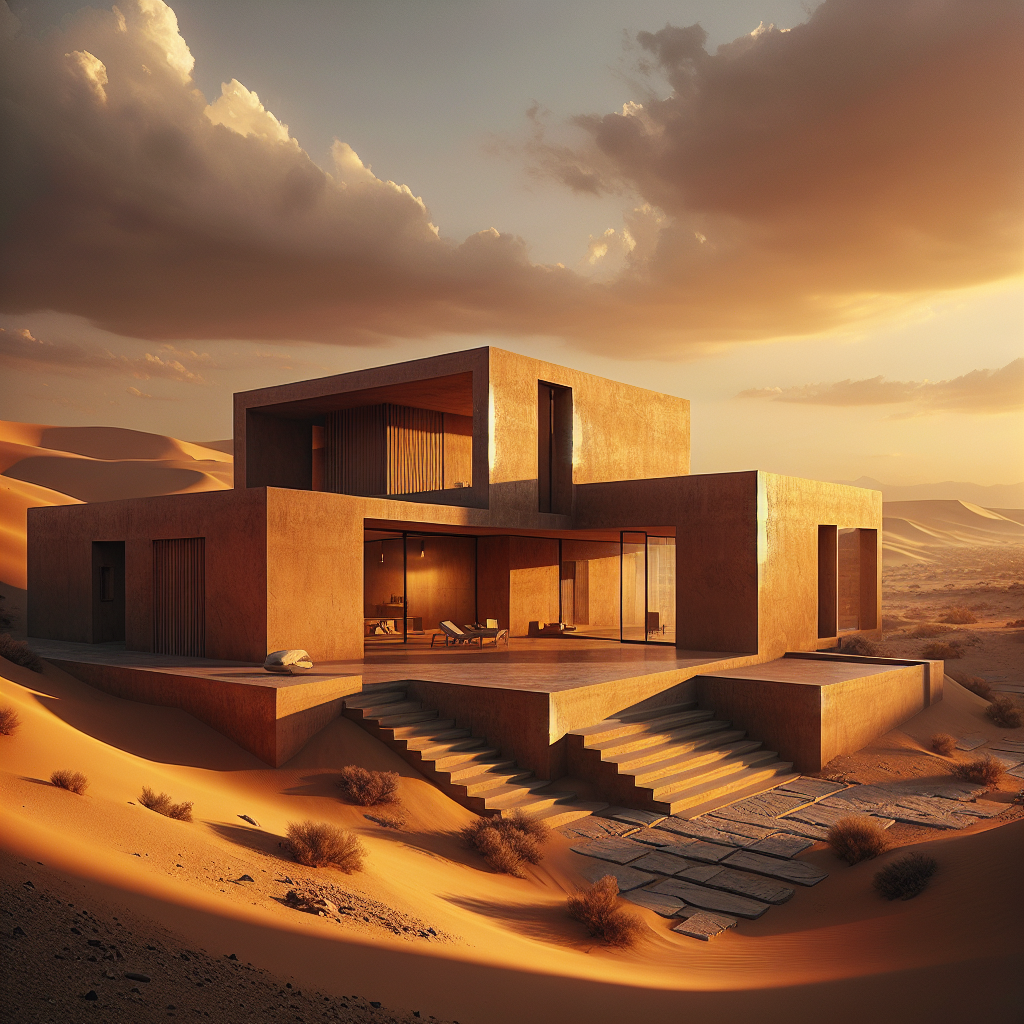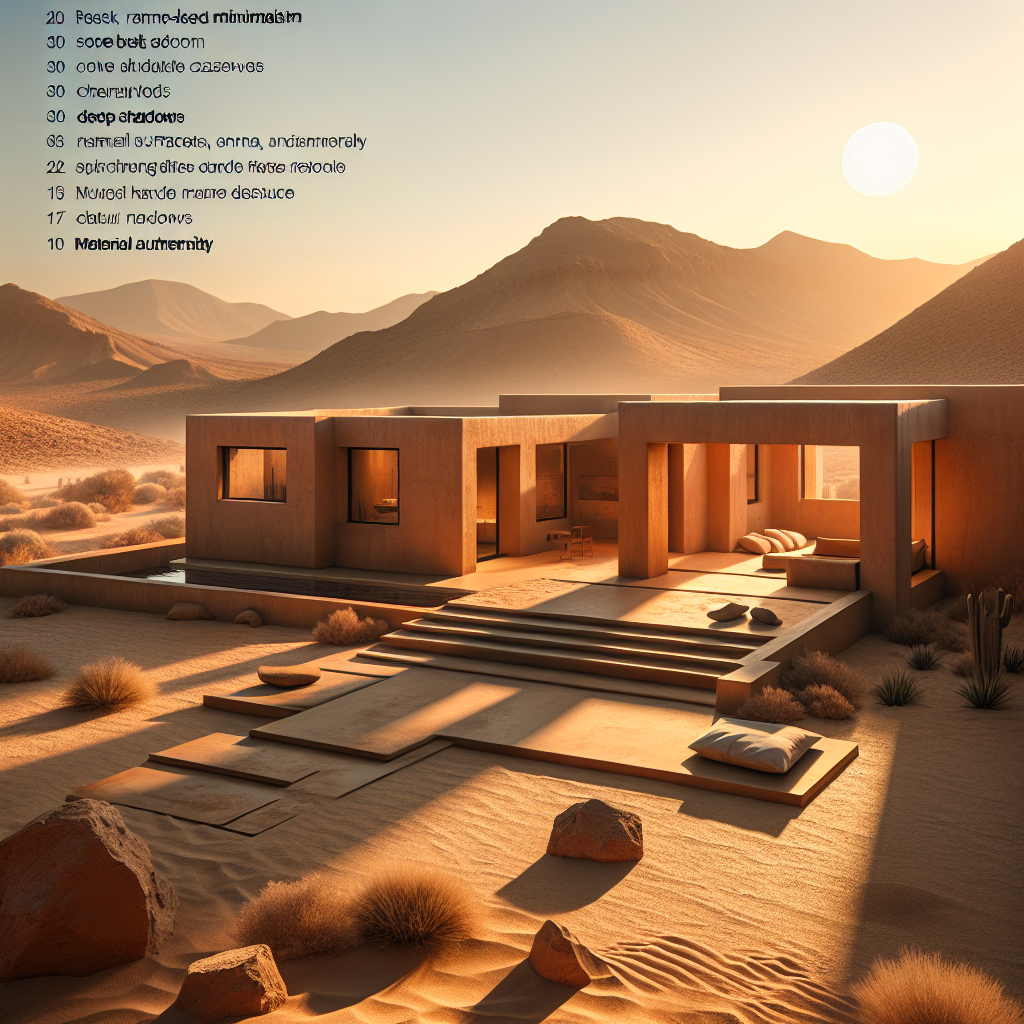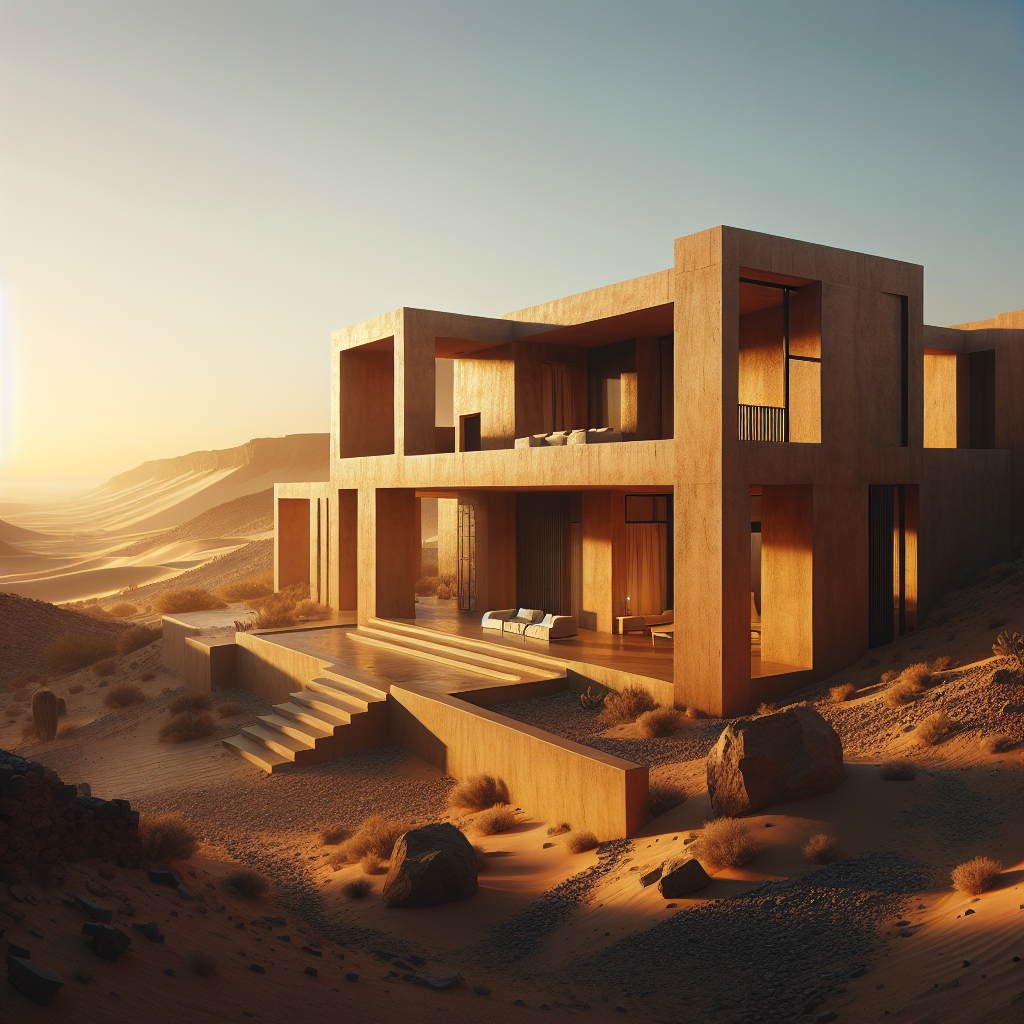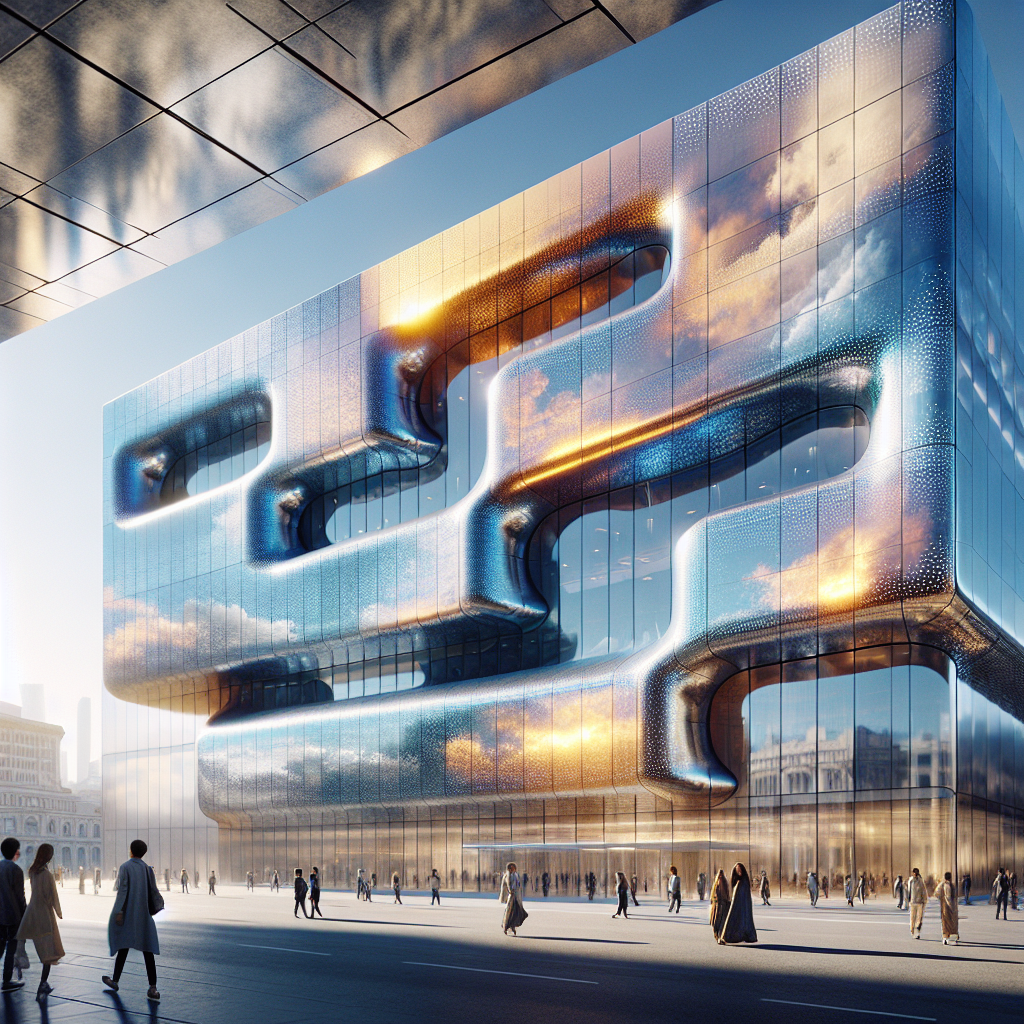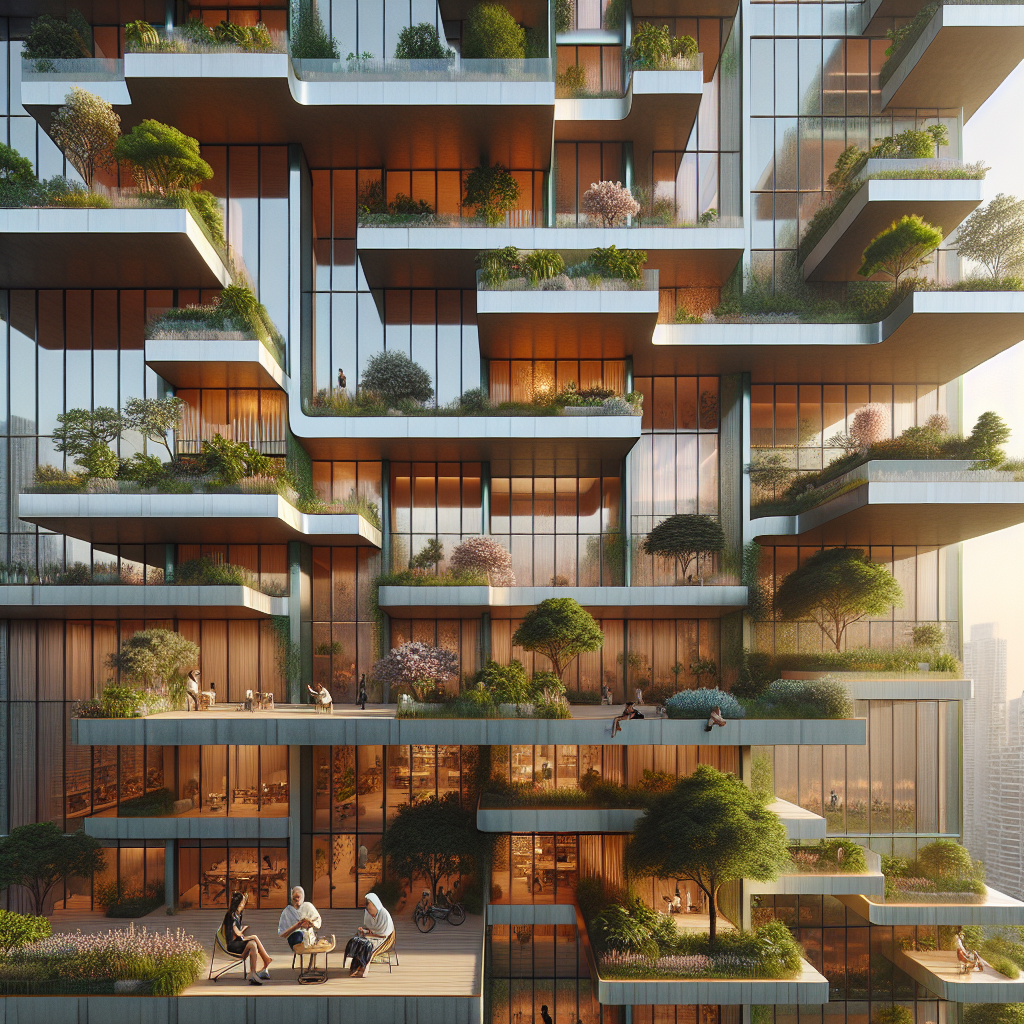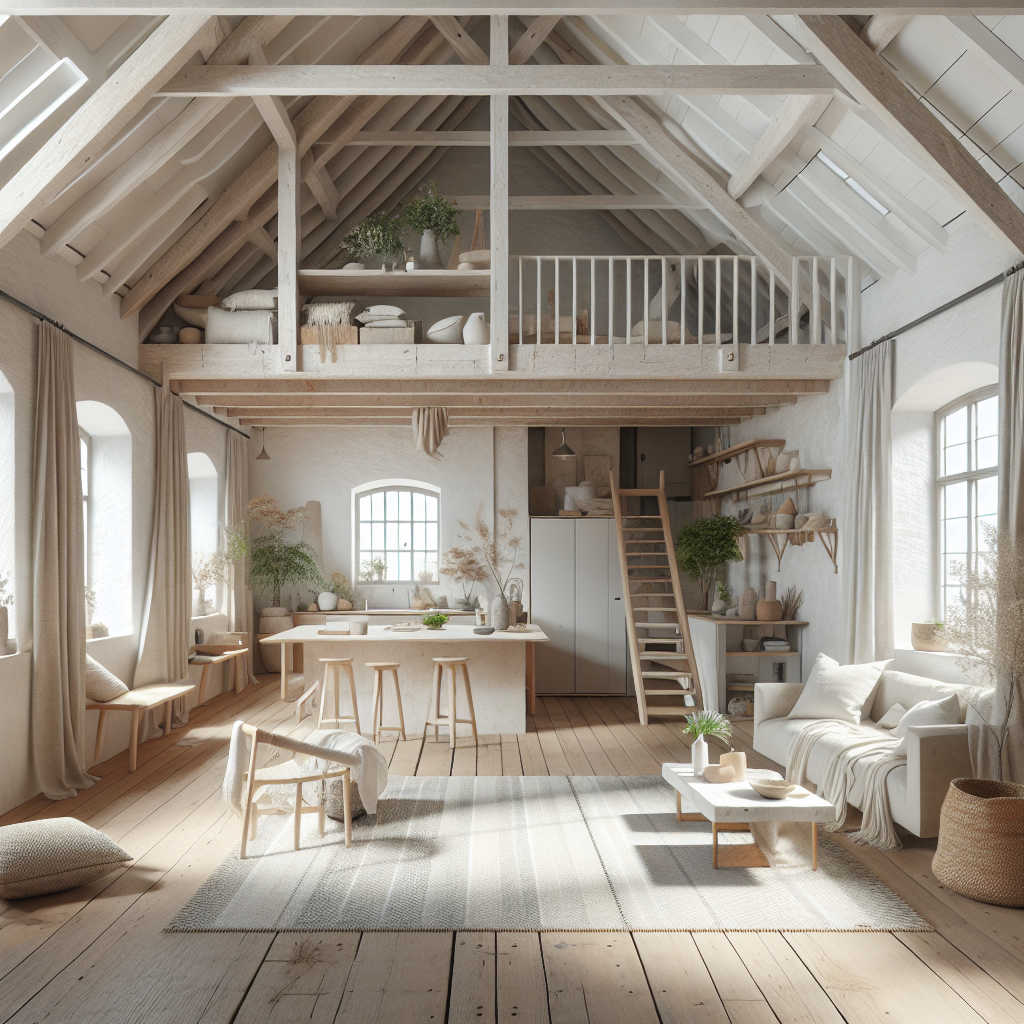Desert minimalism earthen: walls and sun-baked palettes for sustainable villas
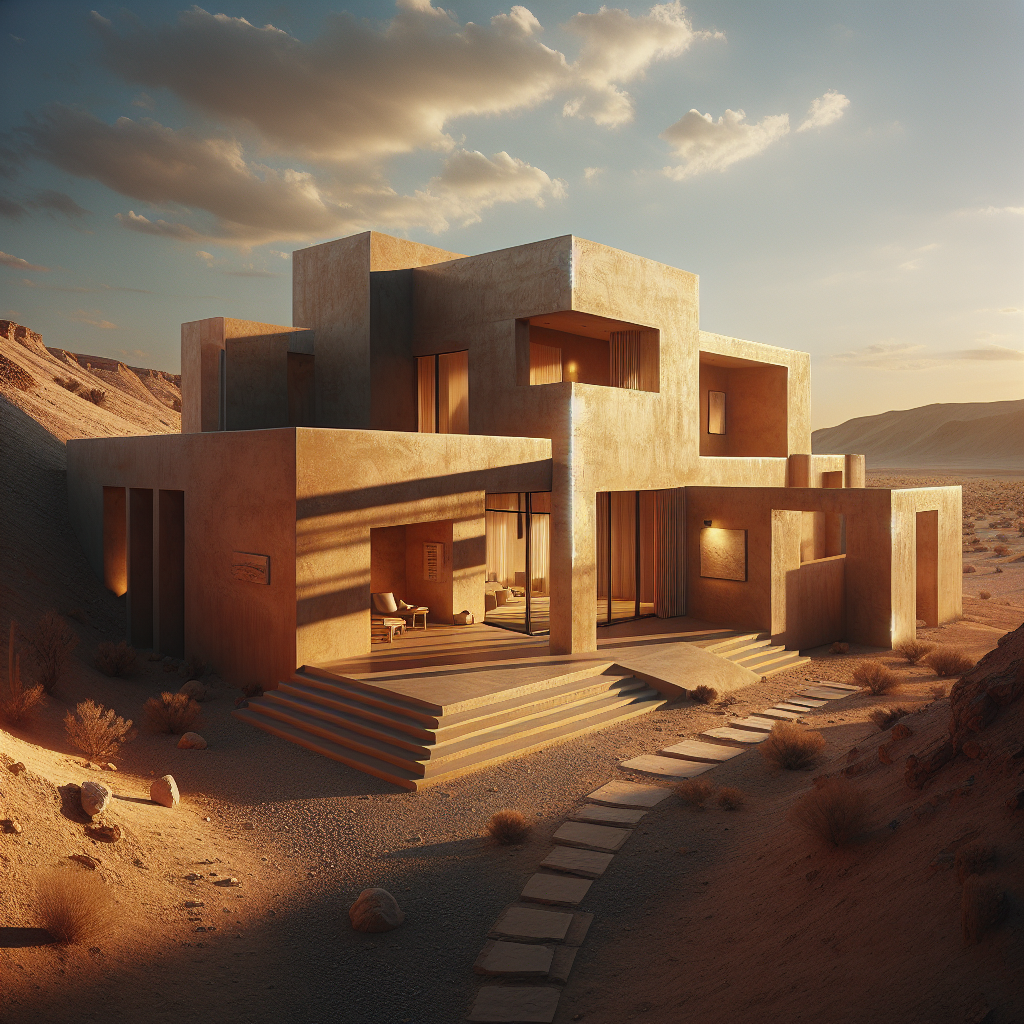
Desert Minimalism Earthen: Walls and Sun-Baked Palettes for Sustainable Villas
In the heart of the world’s arid landscapes, a new architectural language is emerging—one that draws deeply from the earth, the sun, and the ancient wisdom of vernacular design. Desert minimalism is not merely an aesthetic trend; it is a philosophy of restraint, material honesty, and environmental attunement. Its signature lies in earthen walls, sun-baked palettes, and the seamless blending of built form with the surrounding terrain. For architects and designers seeking to craft sustainable villas that resonate with both nature and culture, this movement offers a profound blueprint for the future.
The Essence of Desert Minimalism
At its core, desert minimalism is a study in quiet endurance. It reinterprets the raw poetry of the desert—its shifting dunes, muted tones, and vast silences—into architecture that feels timeless yet contemporary. The style favors mass over ornament, shadow over glare, and texture over gloss. Its forms are monolithic, its materials tactile, and its colors drawn directly from the land: ochres, siennas, and sun-bleached neutrals that mirror the surrounding geology.
Architects such as Tadao Ando and Hassan Fathy have long explored the intersection of minimalism and earth architecture. Today, their legacy finds new expression in the villas of the Middle East, North Africa, and the American Southwest—regions where the climate demands ingenuity and restraint. These structures are not built to dominate the landscape but to dissolve into it, embodying a kind of architectural humility that feels increasingly relevant in an age of environmental urgency.
Earthen Walls: Ancient Material, Modern Mindset
The use of earthen materials—adobe, rammed earth, and clay plaster—is central to the desert minimalist ethos. These materials, often sourced locally, offer exceptional thermal performance. Thick earthen walls absorb heat during the day and release it slowly at night, maintaining a stable indoor climate without mechanical intervention. This principle, known as thermal mass, has been used for millennia in desert architecture, from Moroccan kasbahs to Iranian courtyard houses.
Contemporary architects are reimagining these traditional techniques through modern technology. In projects like the Al Faya Lodge in Sharjah or the Desert Rock Resort in Saudi Arabia, rammed earth is combined with concrete stabilizers and digital fabrication methods to achieve both structural integrity and aesthetic refinement. The result is a tactile, monolithic architecture that feels both ancient and futuristic—an approach that echoes the explorations in 3D-printed earthen architecture now redefining sustainable construction.
Sun-Baked Palettes: The Chromatic Language of the Desert
Color in desert minimalism is never arbitrary. It is derived from the land itself—the burnt sienna of iron-rich soil, the pale beige of limestone dust, the terracotta blush of sunset. These sun-baked palettes not only ground the architecture in its environment but also enhance its passive cooling performance by reflecting harsh sunlight and minimizing heat absorption.
Interior spaces often extend this chromatic restraint. Walls are finished in limewash or clay plaster, their matte surfaces catching light in subtle gradations. Textiles are woven from natural fibers in muted tones, while stone floors retain the tactile coolness of the earth. The overall effect is one of serene cohesion—a sensory experience that blurs the boundary between interior and exterior, human and habitat.
This approach aligns with the growing movement toward biophilic design, which emphasizes natural materials, daylight, and organic forms to promote well-being. In desert minimalism, biophilia manifests not through lush greenery but through a deep respect for the elemental: sun, wind, and soil.
Designing for Climate: Passive Cooling and Spatial Poetics
Sustainability in desert architecture is not a technological add-on—it is embedded in the very logic of design. Desert minimalist villas employ passive cooling strategies that have evolved over centuries: thick walls, shaded courtyards, narrow apertures, and cross-ventilation corridors. Roofs are often flat and reflective, designed to capture cool night air, while deep overhangs and perforated screens mitigate solar gain during the day.
Modern interpretations refine these principles with precision. Computational modeling allows architects to simulate airflow and solar exposure, optimizing every surface for thermal comfort. In this sense, desert minimalism becomes a dialogue between tradition and innovation—a theme explored in depth in ancient desert architecture and its relevance to contemporary sustainability.
The spatial experience of these villas is equally deliberate. Interiors are conceived as a sequence of light and shadow, compression and release. Courtyards act as lungs, drawing in air and framing fragments of sky. Water features, though minimal, are strategically placed to enhance evaporative cooling and acoustic calm. Every gesture serves both function and emotion, crafting an architecture that is as performative as it is poetic.
Crafting with the Earth: Material Authenticity and Local Identity
The tactile quality of desert minimalism is inseparable from its materials. Architects often collaborate with local artisans to revive ancient crafts—mud plastering, hand-carved stone, woven palm screens—infusing modern villas with cultural continuity. This approach not only reduces embodied carbon but also supports local economies and craftsmanship traditions.
In Morocco’s Agafay Desert, for instance, boutique eco-lodges use hand-troweled tadelakt plaster and locally quarried stone to achieve a seamless blend of luxury and authenticity. Similarly, in Arizona’s Sonoran Desert, contemporary villas reinterpret adobe through prefabricated earthen panels, merging artisanal aesthetics with modern efficiency. The result is architecture that feels rooted yet refined, grounded in place but globally resonant.
Such practices echo the principles of biodegradable architecture, where material cycles are closed and waste minimized. In desert minimalism, nothing is superfluous—every surface, texture, and hue is chosen for its integrity and endurance.
Case Studies: Global Expressions of Desert Minimalism
Across continents, architects are reinterpreting desert minimalism through diverse cultural lenses. In Mexico’s Baja California, the Casa Caldera by DUST Architects exemplifies the ethos with its rammed-earth walls and solar-powered systems. In the United Arab Emirates, Anarchitect’s Al Faya Lodge transforms a 1960s clinic into a minimalist desert retreat, its corten steel surfaces aging gracefully under the desert sun. Meanwhile, in Australia’s Flinders Ranges, the Arkaba Homestead employs locally sourced sandstone and off-grid technologies to achieve near-zero environmental impact.
These projects share a common DNA: a reverence for the land, a disciplined material palette, and a commitment to low-impact living. They demonstrate that luxury and sustainability are not opposites but partners in a new architectural narrative—one that celebrates simplicity as the ultimate sophistication.
The Future of Earthen Luxury
As climate change intensifies and resource scarcity reshapes the built environment, the lessons of desert minimalism grow increasingly vital. Architects are rediscovering the intelligence embedded in vernacular forms and translating it into contemporary practice. The rise of earthen villas—crafted from soil, stone, and sunlight—signals a shift from technological excess to ecological empathy.
This movement is not nostalgic but forward-looking. It embraces innovation—digital modeling, sustainable sourcing, and advanced material science—while honoring the wisdom of the past. The desert, once seen as a place of scarcity, becomes a site of abundance: of light, silence, and possibility.
In the end, desert minimalism offers more than an aesthetic; it proposes an ethic. It invites architects and designers to build not against nature but with it—to let the sun, the wind, and the earth themselves become co-authors of design. In doing so, it redefines what sustainable luxury can mean in the 21st century: quiet, enduring, and profoundly human.
Published on 10/07/2025
